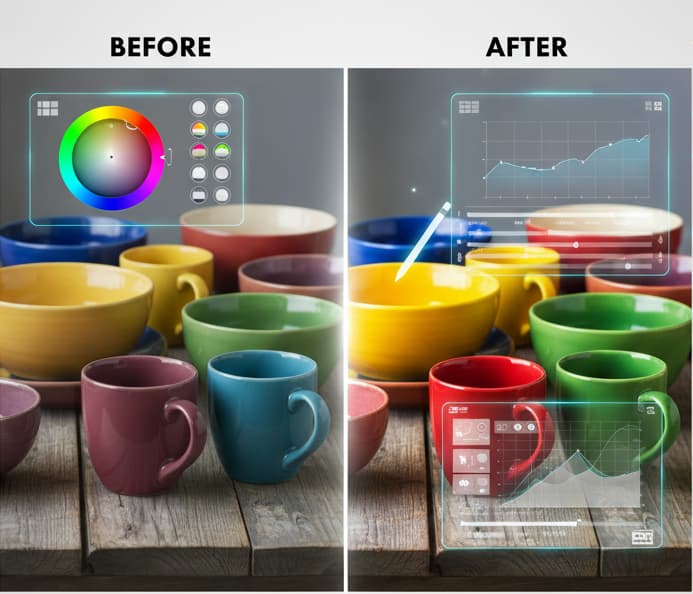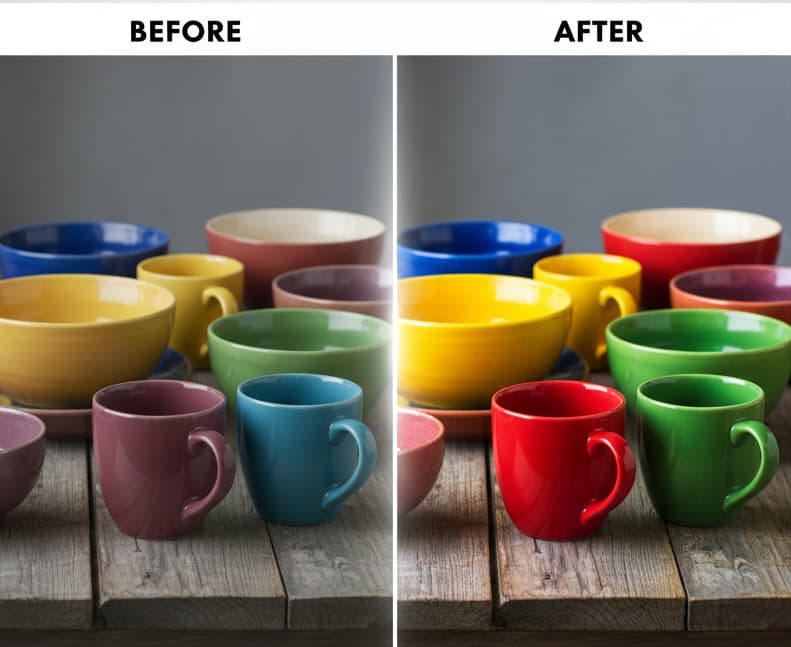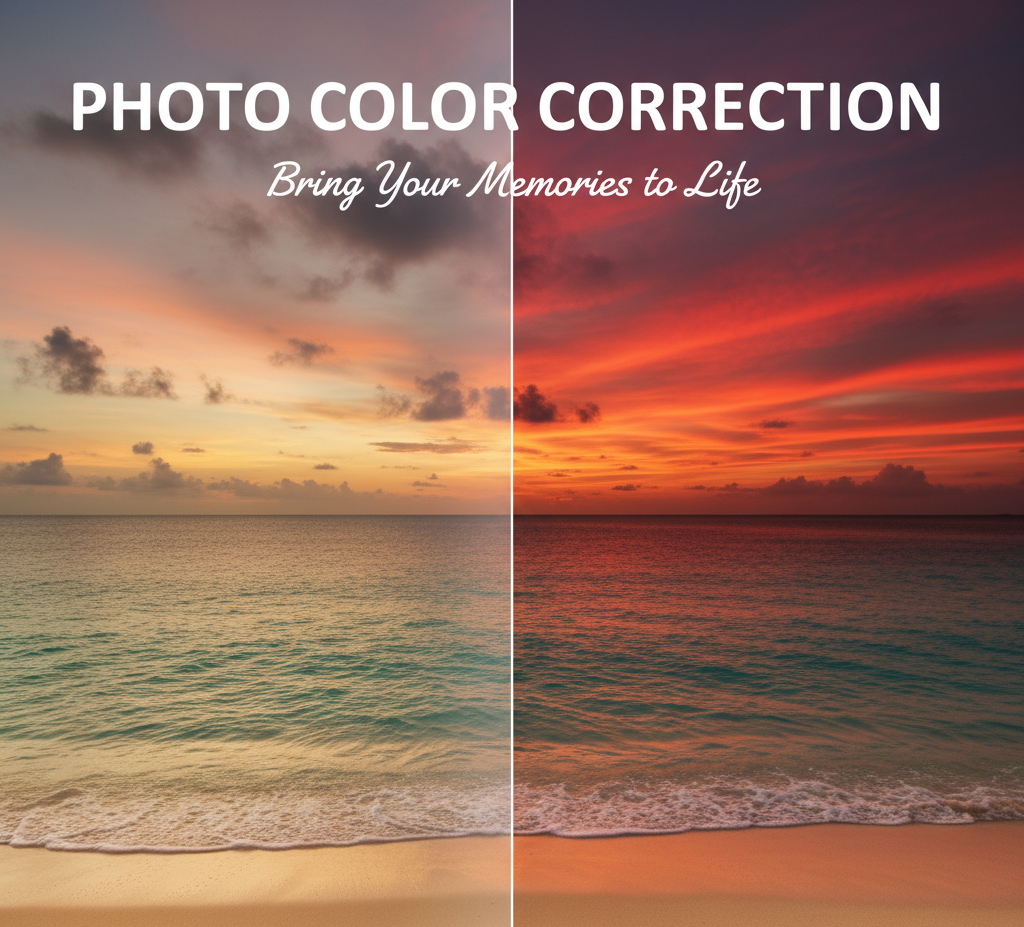When you take product photos, the colors should look right. Actual photo color correction service makes your products look better and help customers trust your brand. If colors are wrong, buyers may feel misled, which can hurt sales.
This guide explains what color correction is, why it matters, and how to fix common problems. You’ll also learn simple steps and tools you can use to make your product photos look professional.
What Is Photo Color Correction?
Photo color correction is the process of adjusting the colors in your photos to make them look accurate and natural. You might need to fix things like wrong white balance, bad exposure, or strange color tints. It’s important to know the difference between color correction and color grading.
Color correction vs. color grading:
- Correction makes photos look real.
- Grading changes the mood or style of a photo.
Why Accurate Color Matters
Here’s why you should care about color correction:
- Builds trust: Customers expect the product to look the same in real life.
- Reduces returns: Fewer surprises mean fewer people sending items back.
- Keeps your brand consistent: Matching colors across all photos makes your brand look professional.

Common Color Issues in Product Photos
Many photographers face common color problems. Here are a few you might encounter:
- White balance problems: Photos look too yellow or too blue.
- Exposure issues: Too bright (washed out) or too dark (dull).
- Color casts: A single color, like yellow or green, makes the whole photo look strange.
- Inconsistent colors: Different tones across your photos make them look messy.
Tools for Color Correction
You don’t need to be a pro to color-correct your photos. Here are some tools you can use:
- Adobe Photoshop: Photoshop offers powerful features like Curves and Levels to fix colors in your photos.
- Lightroom: Lightroom is easier for beginners and is great for editing multiple photos at once.
- Online Tools: If you don’t want to use Photoshop, websites like Pixlr and Fotor let you make quick color fixes for free.
Step-by-Step Guide to Color Correcting Product Photos
1. Prepare Your Image
Before editing, start with a good photo:
- Shoot in RAW: RAW photos give you more color data, which makes editing easier.
- Use a Color Checker: If possible, use a color checker to get accurate color references during your shoot.
2. Adjust White Balance
White balance helps make your photo look more natural. If your photo looks too warm (yellow) or too cool (blue), you can fix it.
- Gray Cards: Use a gray card in your photo shoot. This gives you a reference to adjust the white balance correctly in editing.
- Manual Adjustments: In Photoshop or Lightroom, use the Temperature and Tint sliders to fix the white balance.
3. Correct Exposure and Contrast
Sometimes, photos look too bright or too dark. Adjusting exposure and contrast can help:
- Brightness: If your photo is too bright or dark, adjust the Exposure to get the right light balance.
- Contrast: Increase the Contrast to make the dark areas darker and the bright areas brighter, which adds depth to the photo.
4. Fix Color Casts
If a strange color (like yellow or blue) is taking over your photo, you need to fix the color cast.
- Hue/Saturation: In Photoshop or Lightroom, use the Hue/Saturation sliders to fix the color tint in your photo.
- Color Balance: Adjust the Color Balance settings to get rid of unwanted color casts and make the photo look more natural.
5. Enhance Colors
Once the basic color issues are fixed, you can make the colors pop:
- Increase Vibrancy: Boost the Vibrance to make colors stand out without overdoing it.
- Fine-Tune Colors: Adjust the individual color channels, like red, green, and blue, to perfect the look of the photo.
6. Final Touches
After color correction, give the photo a final polish:
- Sharpen: Sharpen the image to highlight product details.
- Reduce Noise: If there’s any graininess, use noise reduction to make the photo clearer.
- Check for Consistency: Make sure all your product images have the same color tone for a professional look.
Why Color Correction Matters in E-Commerce Photos
When you sell online, your product photos speak for you. If the colors look wrong, buyers may not trust what they see.
- Show the real color of your product so customers know what they’re getting.
- Fewer returns and complaints because the product matches the photo.
- Clean and bright colors make your shop look professional and reliable.
- Good photos catch attention and help products sell faster.
Simple Before and After Example
Imagine you take a photo of a white shirt indoors. Because of the warm lighting, the photo looks yellow.

- Before: The shirt looks off-white and a bit dirty.
- After: Adjust white balance and exposure, and the shirt looks clean and bright, just like in real life.
This shows how image color correction makes your products more appealing.
Quick Fix Checklist
Use this checklist every time you edit:
- Check and fix white balance (no yellow or blue tint).
- Adjust exposure (not too dark, not too bright).
- Remove any strange color cast.
- Boost vibrance slightly to make colors pop.
- Compare photos side by side to keep them consistent.
Advanced Tips and Best Practices
1. Using Presets for Consistency
To save time, create or use presets in Lightroom or Photoshop. Presets let you apply the same adjustments to multiple photos quickly, so your images have a consistent look.
2. Calibrate Your Monitor
If your monitor isn’t calibrated, the colors you see might not be accurate. Use a calibration tool like X-Rite i1Display Pro to make sure your monitor shows true colors.
3. Color Matching Across Devices
Your photos might look different on phones, laptops, or tablets. To keep the colors consistent, use ICC profiles and color management tools.
4. Common Mistakes to Avoid
Here are a few common mistakes to avoid when color correcting:
- Over-saturating Colors: Too much saturation can make your photo look unnatural.
- Ignoring Lighting: Pay attention to the lighting when shooting. Bad lighting can make color correction harder.
- Inconsistent Editing: If you’re editing multiple photos, be sure to keep the color corrections consistent across all of them.
Conclusion
Photo color correction is essential for making your product photos look natural and appealing. By using the right tools and techniques, you can fix color problems, enhance your photos, and create a consistent, professional look for your brand. If you’re using Photoshop, Lightroom, or free tools, these steps will help you get the best results for your product photography.
FAQ
1. What is the difference between color correction and color grading?
Color correction makes your photo look natural by fixing exposure, white balance, and color issues. Color grading adds a style or mood to your image, usually for artistic purposes.
2. Can I color correct photos without professional software?
Yes! Free tools like Pixlr and Fotor offer basic color correction features that anyone can use.
3. How do I fix a photo that looks too warm or too cool?
Adjust the white balance in your editing software by using the Temperature and Tint sliders to make the photo look more neutral.
4. Why do my product photos look different on other screens?
This can happen if your monitor isn’t calibrated properly. Calibrating your monitor helps you see the true colors of your photo.
5. Is it necessary to shoot in RAW for color correction?
Shooting i
What is the difference between color correction and color grading?
Color correction makes your photo look natural by fixing exposure, white balance, and color issues. Color grading adds a style or mood to your image, usually for artistic purposes.
Can I color correct photos without professional software?
Yes! Free tools like Pixlr and Fotor offer basic color correction features that anyone can use.
How do I fix a photo that looks too warm or too cool?
Adjust the white balance in your editing software by using the Temperature and Tint sliders to make the photo look more neutral.
Why do my product photos look different on other screens?
This can happen if your monitor isn’t calibrated properly. Calibrating your monitor helps you see the true colors of your photo.
Is it necessary to shoot in RAW for color correction?
Shooting in RAW gives you more flexibility in editing because it keeps more color information than JPEGs.


